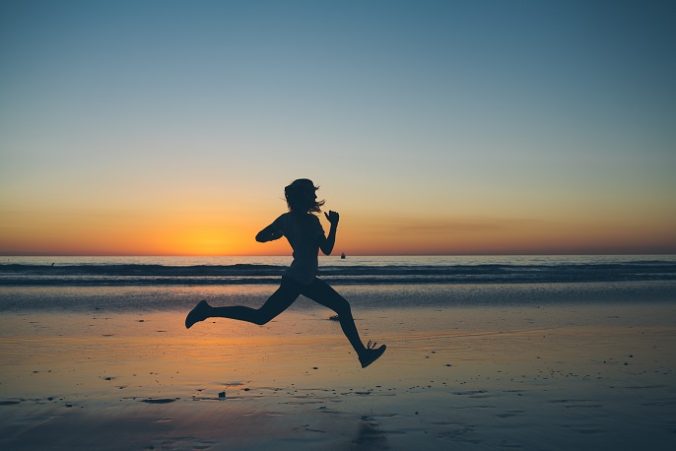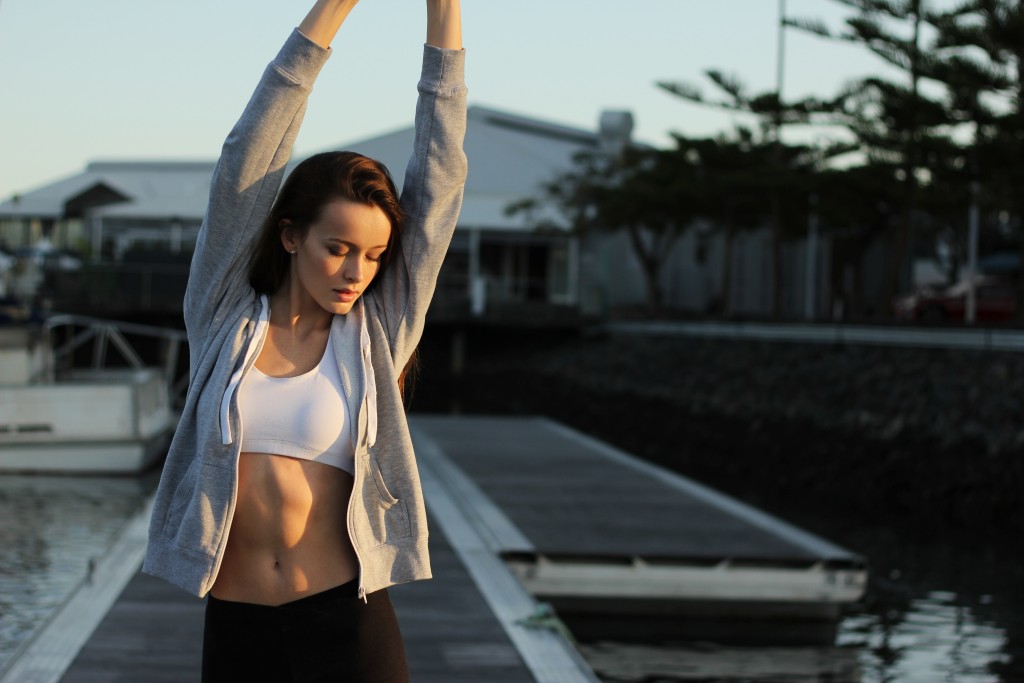Hadn't realised how long it had been since my last update, so thought I thought I best get posting again!
Just a reminder of where I offer my massage and injury treatment:
- Gloucester
- Newent
- Cheltenham
- Tewkesbury
- Forest of Dean
😊

Fully Fit Therapy - Treatment to your door -
Hadn't realised how long it had been since my last update, so thought I thought I best get posting again!
Just a reminder of where I offer my massage and injury treatment:


Yes it’s that time of year again. Christmas has been and gone, and now the New Year is here when people make their resolutions.
Some people’s maybe to race the London Marathon, others may want to get the beach body they have always talked about or it could be to just to give thanks more often.
When you see your friends in the pub telling you this, probably even last night, how many people do you think will actually get that body or run that race? Research actually suggests that only around 8% of people complete their new year’s resolutions. Is there a reason for this?
Goals for New Years like the two above tend to be very vague. ‘I will race the London Marathon’ sounds like a pretty good goal doesn’t it? They apply, get accepted, but with no immediate goals to aim for it become very easy to drop behind on the preparation and training. They end up completing the race, but find it extremely difficult and quite possibly pick up an injury.
Could they have done better? Of course! If only they had made their goal more specific. A much better goal would have been to say ‘I want to enter the London Marathon, I am going to train for at least 2 times a week to begin with and I want to beat 5 hours.’ This resolution is much more specific and gives yourself a more tangible goal.
SMART goal setting is one of the most widely used methods:
S- SPECIFIC
M- MEASURABLE
A- ATTAINABLE
R- RELEVANT(RESULTS)
T- TIME ORIENTATED
The ‘beach body for summer’ resolution is the same. It doesn’t give you a time to aim for, just ‘summer’, be SPECIFIC. ‘By June 12th I want to be size 10’ or ‘I want to have a body fat of 8%’, I will do this by going to the gym twice a week on Tuesdays and Thursdays. This makes each week a goal, and makes you more likely to keep it in the long term. Another way of keeping to your goals is by making it public and telling your friends and family, even keeping a blog on it or updating it daily on facebook.
A few other tips for goal setting
1. Plan in advance
Try and make some sort of timetable of your week to then fit your goal in.
2. Don’t put things off
When you start thinking ‘i can skip today, it won’t matter’. DON’T. A 6 month goal is completed by REPEATING the daily basics
3. Make it enjoyable
If you don’t enjoy it, you won’t do it. There is more than one way of doing something. E.g. if you don’t like running on your own, find a running club.
4. Don’t expect instant results
5. Baby Steps
There is nothing wrong with hoping to do an Ironman, when the only distance you have ran before is 5km. You should set your sight on first completing a half marathon. Keep the really big goals in the back of your head, as one day they will be closer than you think.
Lastly the most important part of your goal/s is that you enjoy getting to the end product. I was directed to a video to do with goal setting, where it talks about how quickly the feeling of euphoria goes after completing a goal. https://www.youtube.com/watch?v=-3bBk6oneqc&feature=youtu.be
The cliff for the video boils down to:
MAKE SURE ENJOY THE DAILY GRIND, COMPLETING THE END GOAL IS A BONUS
Hope you all have had a good Christmas and a Great New Year!!

With the London Marathon fast approaching I thought it was only right to give out my tops tips for helping get your best time possible!
You don't have to follow all of my tips but maybe just implement 1 or 2 into the last few weeks of your training routine.
1. If possible, start doing runs on the same topography as the marathon. For example, go up and down lots of hills if you’re running New York City.
As this is all about the London Marathon, this is a flat and fast course. Therefore you want to run on flat routes in the lead up to as you’ll be using the same muscles for the whole race.
2.Drink on the Run
Practice during your remaining long and semi-long runs with the sports drink and energy gels you intend to refuel with during the race
If you are a serious racer and or have picky stomachs you should be using the sports drink that will be available on the race course. You also want to find out how often your marathon will have aid stations, and practice drinking at that rate.
If you don’t run with fluids, place bottles along your training route.
3. Dress the part (all the gear but a good idea)
Don’t run in a cotton t-shirt, you’ll prefer it and perform so much better in a running top!
A couple of weeks before, you want to go for a run in it to make sure it does not irritate your skin!
4. Clockwork
If you can, run at the same time of day as the start of your marathon. This way, your body’s rhythms–including the all-important bathroom routine– will be in sync with your marathon needs come race day. The more often you can do this, the better, but try for at least the last three days before the race!
5. Run a Dress Rehearsal
Four or five days before the marathon, do a two- or three-mile marathon-pace run in your marathon outfit and shoes. Picture yourself on the course running strong and relaxed. Besides boosting your confidence, this run will provide one last little bit of conditioning and will help you lock in to race pace on marathon day.
6. Chill
Reduce the outside stresses in your life as much as possible for the last week of training!
Try to have your work projects under control, politely decline invitations to late nights out with friends and family etc.
Most of all, put your feet up!
Save museum tours and trips outs for after the marathon, and don’t spend four hours the day before shopping for a post marathon treat to yourself!
7. Set Two Goals
Review your training and set one goal for a good race day, and another as a backup plan in case it’s hot or windy or you’re just not feeling great,”.
So many things can go wrong in a marathon, from a blister at the half way point or just not feeling great the day of the race.
Therefore you need that secondary goal to stay motivated if things aren’t perfect, which they rarely are.
So that's the first part of my marathon tips!
If you'd like more information, help or to book a last minute session feel free to give me a call on 07759689612.
As progression is made in all other aspects of the rehabilitation process for lower back pain, there should be an eventual return to normal activities of daily life and even training.
The exercises used should provide enough stress to the body to adapt to higher demand but not so much as to hinder the healing process.
For this reason, returning to heavy training too soon can over stress healing structures and tissues, and delay the rehabilitation process. The volume and intensity of training should be slowly progressed in a step-by-step manner. Each person will return to his or her previous level of strength and performance at a different rate.
So there you have it my 5 principles of lower back pain! Hope you can now apply it to yourself to help manage your pain and get you back to be Fully Fit! If you would like to book a session, have more help or even just some advice feel free to contact me and i'll be happy to help!
Why should you book in with me? and not a different Sport Therapist or a Physio?
Well, a lot of people ask me what I do, and when I reply ‘I’m a Sport Therapist’, most respond with ‘ah ok, so a physio?’ That reply is correct in a certain way.
Sports Therapists aren’t Physiotherapists, but they apply physiotherapy skills when required.
This is because physiotherapy is defined as “the treatment of disease, injury or deformity by physical methods including massage, heat treatment, electricity and exercise, rather than drugs or surgery”
Therefore, as a Sports therapist I will apply many of the techniques and modalities which I have learnt, and apply them in a sport and exercise perspective, rather than a traditional healthcare context that a physiotherapist would.
To become a member of The Society of Sports Therapists, you need to study an accredited course.
These currently are all degree/master courses, which take a minimum of three years for the degree and a fourth year for the masters.
There is a qualification called Diploma in Sports Therapy, this is easily attainable on just a weekend or part time course.
The gap in knowledge here can be huge, therefore it is always best to look for the Society of Sports Therapists to ensure your Therapist is fully trained.
For more information on The Society Of Sport Therapists visit: http://www.society-of-sports-therapists.org/

Sport-Therapist-
Benefits from being treated by a member such as myself from the Society of Sports Therapists include:

No one lifts more than powerlifters, so those big belts you see them wear must help fend off back injury right?
Well umm no actually, it has been found that these belts can actually increase, that’s right increase back injury.
‘But I lift heavy objects at my work not in the gym, surely that helps’ ….. no again, it has been found they have little to no preventative use in the work place.
The way they really work is they provide a sensory input and make you feel more secure and stable. This encourages the idea that your back needs to be stabilised, backs are actually sturdy and non-fragile and need no help in being stabilised.
You can now go and leave your back belts at home or in the shop!
If you have any back pain or just aches and niggles, give me a call and book in today to help you get back on track to being Fully Fit!
Siewe J, Rudat J, Röllinghoff M, et al. Injuries and overuse syndromes in powerlifting. Int J Sports Med. 2011 Sep;32(9):703–11. PubMed #21590644.
Steffens D, Maher CG, Pereira LS, et al. Prevention of Low Back Pain: A Systematic Review and Meta-analysis. JAMA Intern Med. 2016 Jan:1–10. PubMed #26752509. Back belts “do not appear to prevent LBP.”
https://www.painscience.com/articles/lifting-technique-is-not-important-for-your-back.php
Searle, A., Spink, M., Ho, A., & Chuter, V. (2015). Exercise interventions for the treatment of chronic low back pain: a systematic review and meta-analysis of randomised controlled trials. Clinical rehabilitation, 29(12), 1155-1167.
Natour, J., Cazotti, L. D. A., Ribeiro, L. H., Baptista, A. S., & Jones, A. (2015). Pilates improves pain, function and quality of life in patients with chronic low back pain: a randomized controlled trial. Clinical rehabilitation, 29(1), 59-68.
Daenen, L., Varkey, E., Kellmann, M., & Nijs, J. (2015). Exercise, not to exercise, or how to exercise in patients with chronic pain? Applying science to practice. The Clinical journal of pain, 31(2), 108-114.
Murphy, S., Blake, C., Power, C. K., & Fullen, B. M. (2014). Outcomes of a group education/exercise intervention in a population of patients with non-specific low back pain: a 3-year review. Irish Journal of Medical Science (1971-), 183(3), 341-350.
Cohen, S. P. (2015, February). Epidemiology, diagnosis, and treatment of neck pain. In Mayo Clinic Proceedings (Vol. 90, No. 2, pp. 284-299). Elsevier.

Foam rolling is a common form of self-myofascial release which is a manual therapy. It is often used by lots of athletes prior to a workout with a view to improving flexibility or after a workout with a view to reducing muscle soreness and promoting quicker recovery.
Pre exercise foam rolling has been found to increase range of movement in the short term.
Post exercise it has been found to help with soreness and fatigue during exercise.
What needs to be expanded on however is finding the optimal duration of foam rolling as there is currently no gold standard foam rolling programme.
For further information on this you can have a look at the below articles.
Ajimsha, M. S., Al-Mudahka, N. R., & Al-Madzhar, J. A. (2015). Effectiveness of myofascial release: Systematic review of randomized controlled trials. Journal of bodywork and movement therapies, 19(1), 102-112.
Andersen, L. L., Jay, K., Andersen, C. H., Jakobsen, M. D., Sundstrup, E., Topp, R., & Behm, D. G. (2013). Acute effects of massage or active exercise in relieving muscle soreness: Randomized controlled trial. The Journal of Strength & Conditioning Research, 27(12), 3352-3359.
© 2024 Massage & Injury Treatment- Newent, Gloucester & Cheltenham
Theme by Anders Norén — Up ↑